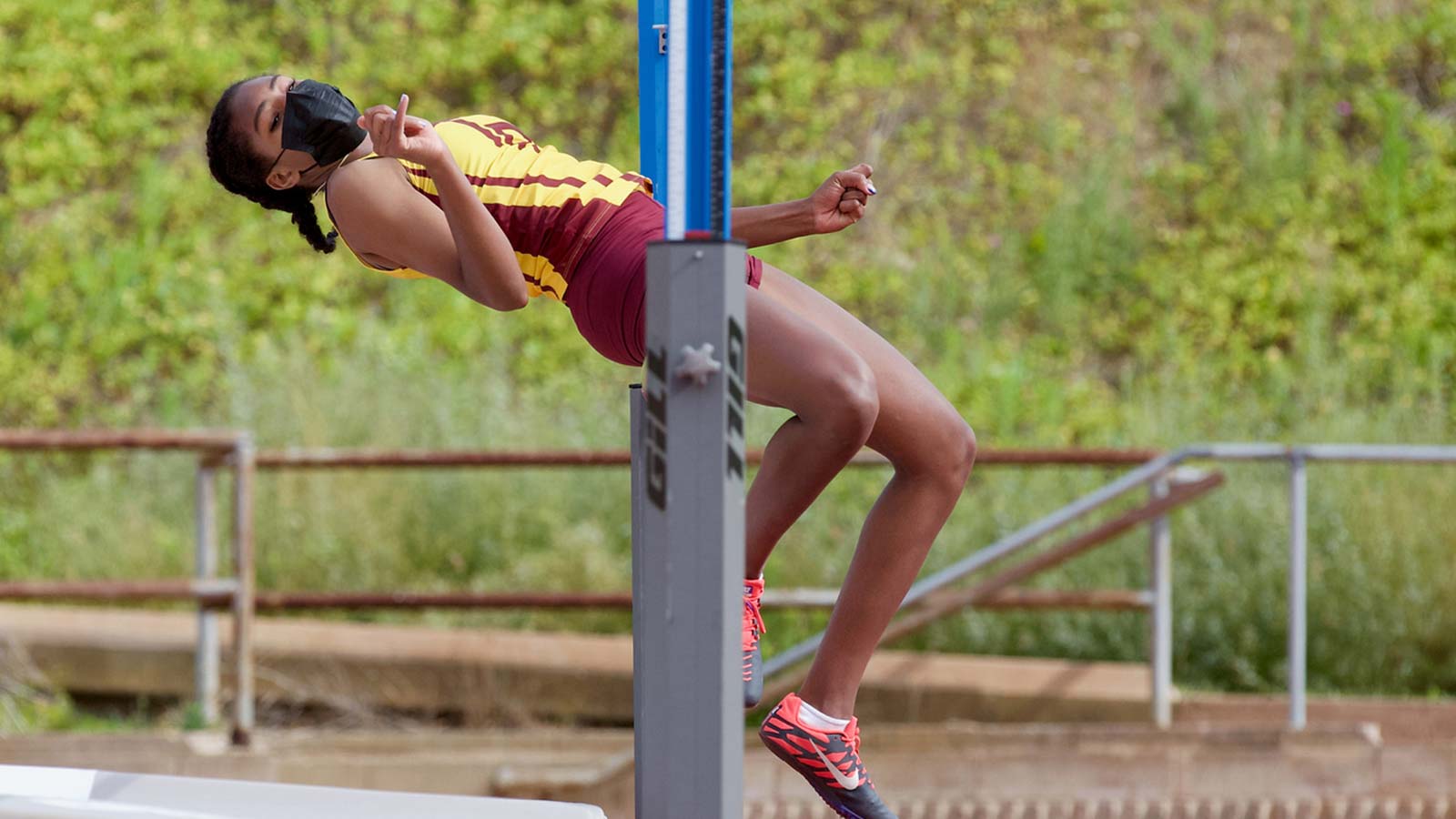OFFICIATING THE HIGH JUMP – CLICK HERE FOR PDF
- The starting height and successive elevations should be determined by the Game Committee and should be announced to the athletes.
- Record the height athletes states, as the athlete’s opening height, upon check-in to the event.
- Explain the “3 alive” or “5 alive” competition procedure. Call up the contestants in order they are jumping with: “up”; “on deck”, and “on hold”.
- The standards should be 12 feet (4.04 meters) apart.
- The base of the standards shall not be moved during the competition, and its position should be marked prior to the start of competition. The platform supporting the bar should be parallel to it.
- Allow a 10 MM gap between the end of the bar and the upright.
- Mark one side so the bar can be replaced the same every time.
- Measurements of crossbar shall be recorded to nearest lesser ¼ inch or centimeter. Measure the height of the bar at each new height. Records require a measurement prior to the attempt ONLY.
- Athletes may place marks in the approach area. They can not interfere with the approach of other jumpers.
- Late arrivals may begin at the height in progress. No lower of the bar; no warm-ups or practice jumps.
- At the conclusion of any field event there shall be no further practice.
- When one competitor is left in the competition, he/she can determine the next height.
INFORMATION TO TELL THE ATHLETES BEFORE STARTING
- Competitors may exit the landing pad in any direction. Competitors must jump off one (1) foot.
- Competitors may start at any height and may pass any height. The decision to pass a trial shall be communicated to the event judge before the clock is started.
- A competitor shall initiate a trial within one (1) minute, after being called. When 3 or fewer competitors remaining, three (3) minutes to initiate a trial; 1 competitor remains, 5 minutes to initiate a jump.
- Misses are: a. Knocking the bar off no matter where you are, as the bar falls; b. Touching the ground or the pit beyond the standards and bumping the standards.
- Competitors are out if they miss on three consecutive jumps.
- If competitors leave to compete in another event, they may have to jump at the current height, when they come back. The time limit (10 min.) is determined by the games committee. The bar will not be lowered.
BREAKING TIES
When there is a tie at any height in the finals, places and points scored shall be awarded as follows:
STEP 1 – The competitor with the fewest number of trials for the last height, at which the tie occurs shall be awarded the higher place.
STEP 2 – .If the tie still remains, the competitor with fewest total number of unsuccessful trials throughout the competition, up and included the height last cleared, shall be awarded the higher place (no passed heights).
STEP 3 – If the tie remains after applying (a) and (b), and if it concerns first place:
1) The competitors tying shall make one (1) more attempt at the height, as which they failed.
2) If no decision is reached, the bar shall be lowered by one (1”) for one (1) more attempt.
NOTE: If tie involves a passed height on one athlete, the bar will be lower to that height.
3) If two or more of the tying competitor cleared the height, the bar shall be raised by intervals of 1”. Each competitor shall attempt one (1) at each height, until there is a winner.
STEP 4 – If the tie concerns any place other than first, the competitors shall be awarded same place

